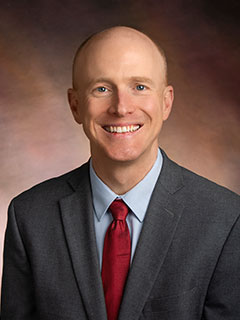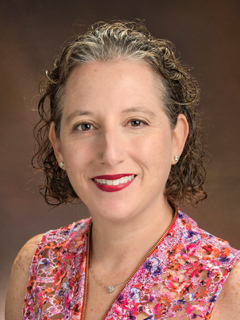HOW CAN WE HELP YOU? Call 1-800-TRY-CHOP
In This Section
Holveck Family Gift Expedites Research for Rare Cancers
By Nancy McCann and Sharlene George
A multimillion dollar gift from the Holveck Family named after Connor Boyle — the “Connor Initiative: Precision Therapeutics for Osteosarcoma & Rare Cancers” — will propel translational research, creating a new opportunity where novel therapies will deliver the right care at the right time at the right level for each child with osteosarcoma.
Osteosarcoma is the most common malignant bone tumor among children, adolescents, and young adults, yet it is still classified as a rare disorder, affecting approximately 400 children younger than age 20 every year in the United States.
Due to the many different genetic changes that can cause this bone cancer, finding an effective treatment has been difficult. One size does not fit all.
“While surgery and chemotherapy are effective in treating some patients with osteosarcoma, clinical trials testing new drugs have not identified new curative treatments for this rare and complex disease,” said pediatric oncologist Theodore Laetsch, MD, who will lead the Connor Initiative. “Treatment and research of osteosarcoma need a true precision medicine approach.”
Unlocking Novel Therapies Through Collaboration
Dr. Laetsch will work closely with the Mitochondria and Cancer Connections (MC²) Research Program team at Children’s Hospital of Philadelphia, which the Holveck Family helped to establish with a gift in 2021 to uncover new insights into disease processes and novel therapeutics opportunities at the intersecting points of osteosarcoma and mitochondrial disease.
Since then, MC2 co-leaders geneticist Marni Falk, MD, and neuroscientist Adam Resnick, PhD, have created reliable partnerships and expedited pathways for generation and analysis of high quality, high dimensional, research “multi-omics” data. This is necessary to begin to build accurate insights into causes and treatments of complex diseases across the complementary layers of genomic and mitochondrial DNA sequence data, transcriptomic data, proteomic data, metabolomic data, and deep cell immune phenotyping data — both for osteosarcoma cancer cells and primary mitochondrial disease.
The goal is to reveal the precise biological mechanisms and strategies at play at the edge of cellular life and death. Learning from the growth and survival strengths and weaknesses of one disease class versus the other, the MC² research team and their collaborators will shed light on innovative precision treatment strategies for both diseases.
“We’re unlocking potential connections at the crossroads of cancer and mitochondrial disease,” said Adam Kraya, technical director of clinical and translational data Science for D3b. “Leveraging the rare link between these conditions, we can target cancer’s metabolic roots while revitalizing mitochondrial function.”
For osteosarcoma, the researchers are studying omics data to try to understand the metabolic strategies cells adopt to survive and grow, so new strategies can be devised to target their proverbial “achilles heel” and ultimately beat cancer.
“If we can figure that out, and we can highlight and confirm what’s happening at different time points in their DNA, RNA, protein, metabolites, and immune levels, then we will be able to predict and validate new treatment targets,” Dr. Falk said.
Establishing an Integrated Clinical Research Process
While people with primary mitochondrial disease have on average 16 major medical problems potentially involving every organ, cancer is conspicuously not among them — an observation the MC² team believes may be due to cancer’s need for functional mitochondria to live and grow.
The researchers are exploring this idea in several ways by examining how different osteosarcoma tumor cells grow in culture with different nutrients and drugs that target mitochondrial metabolism. They are also creating human osteosarcoma tumor models in zebrafish, to learn if their growth is altered in an animal with primary mitochondrial disease compared to wild-type healthy animals.
MC² will establish an integrated clinical research process overseen by Dr. Resnick and Dr. Laetsch, who also leads the Developmental Therapeutics Program, the Very Rare Malignant Tumors Program, and co-leads the Center for High-Risk Pediatric Cancer Frontier Program at CHOP, to more quickly benefit children by collecting and studying their tumor samples, along with creating a reliable pipeline to generate all associated layers of multi-omics data and validate potential precision therapies in cell and animal preclinical models.
And with the purchase of a new sequencer housed in the clinical diagnostic laboratory directed by Marilyn Li, MD, MS, the team will be able to characterize these tumors and generate data about which target to go after, making the data readily actionable by clinicians to inform a treatment plan.
A patient navigator will soon be on board to help families find their way through a tough solid tumor cancer diagnosis by guiding patients to get the healthcare and other resources they need and connect to clinical research.
“This program is a prime example of building a learning health system where we are able to harness research to generate information that we hope to act on to ultimately benefit patients in real time,” Dr. Falk said.



